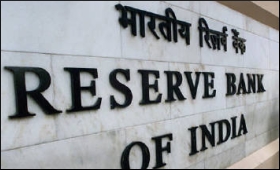|
|
|

|
Top 50 NBFCs' asset-liability status under RBI lens: Das
|
|

|
|
| Top Stories |
 |
|
|
|
SME Times News Bureau | 24 Feb, 2020
The top 50 non-banking finance companies (NBFCs) were being monitored
closely, said Reserve Bank of India Governor Shaktikanta Das, here on
Monday, hinting at the RBI's focus on early detection of risks signs or
any contagion effect on the credit system.
"The asset-liability
management (ALM) position and other relevant aspects of the top 50 NBFCs
are being closely monitored. It covers all NBFCs with asset size above
Rs 5,000 crore. The ALM of top 51-100 NBFCs is also being examined by
the respective regional offices of the RBI," Das said at the 'Banking
landscape in the 21st century' seminar.
The NBFC sector has seen a
lot of turmoil, starting with a series of defaults by Infrastructure
Leasing & Financial Services (IL&FS), that forced the government
to intervene and exposed weaknesses in the sector. Then Dewan Housing
Finance Corp also entered a crisis phase making the RBI to keep close
vigil.
The RBI was having regualar interaction with statutory
auditors, credit rating agencies, credit information firms, mutual funds
and banks having large exposures to NBFCs, he said.
"In addition
to the four pillars of supervision -- on-site inspection, off-site
surveillance, market intelligence and reports of statutory auditors
(SAs) -- a fifth pillar of supervision in the form of periodic
interaction with stakeholders, including statutory auditors, credit
rating agencies, credit information firms, mutual funds and banks having
large exposures to NBFCs has been instituted to have a clearer
understanding of the emerging risks and developments in the sector," he
said.
It would ensure availability of critical information, whenever required, he said.
On
the co-operative banks, he said the RBI had developed a robust
stress-testing framework for urban cooperative banks (UCBs). It also
acts as early warning system for co-operative banks with timely
identification of weak banks for appropriate action.
It's a
shift from reactive to pro-active supervisory approach, intended to
ensure surveillance of UCBs' vulnerabilities. Moreover, as on December
31, 2019, over 90 per cent of these banks are now on the core banking
solution, although efforts are required to standardise solutions and
have a robust set of internal controls implemented for improved
outcomes.
The CAMELS (capital, asset quality, management,
earnings, liquidity and systems & control) supervisory rating
methodology for UCBs has also been revised. "We have taken steps to
bring UCBs under the CRILC reporting framework and issued draft
guidelines on exposure norms to mitigate credit concentration risk and
enhancement in the priority sector lending targets to further financial
inclusion," he said.
To improve governance, the RBI had issued
guidelines on formation of the UCB board of management (BOM) with
deposit size of Rs 1,000 crore, he said. "To have appropriate regulatory
powers in respect of co-operative banks, almost on par with those over
banking firms, certain amendments in the Banking Regulation Act, 1949
have been proposed," the RBI Governor said.
The RBI move follows
the sanctionining of personal loans by PMC Bank in August by throwing of
all rules to the wind. Also, it was over and above the Rs 2,500 crore
loan that HDIL had ceased repaying and which the cooperative bank failed
to classify as bad loan.
|
|
|
| |
|
|
|
|
|
|
|
|
|
|
|
|
|
|
| |
| Customs Exchange Rates |
| Currency |
Import |
Export |
US Dollar
|
66.20
|
64.50 |
UK Pound
|
87.50
|
84.65 |
Euro
|
78.25
|
75.65 |
| Japanese
Yen |
58.85 |
56.85 |
| As on 13 Aug, 2022 |
|
|
| Daily Poll |
 |
 |
| PM Modi's recent US visit to redefine India-US bilateral relations |
|
|
|
|
|
| Commented Stories |
 |
|
|
|
|
|
| |
|